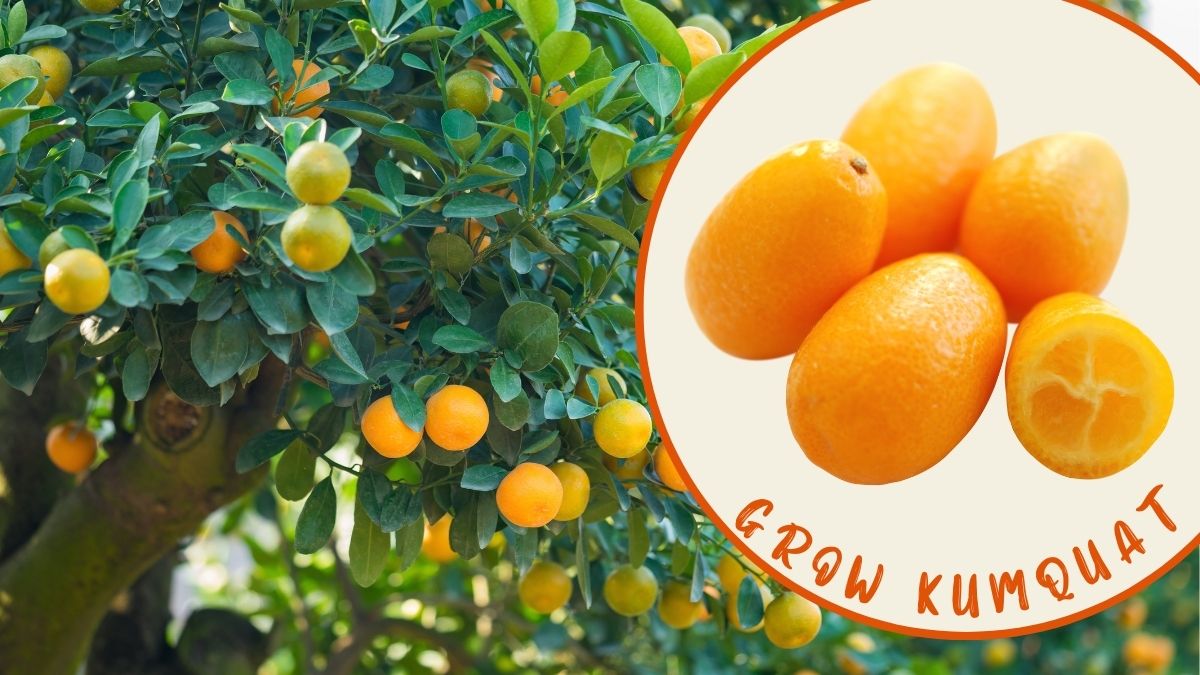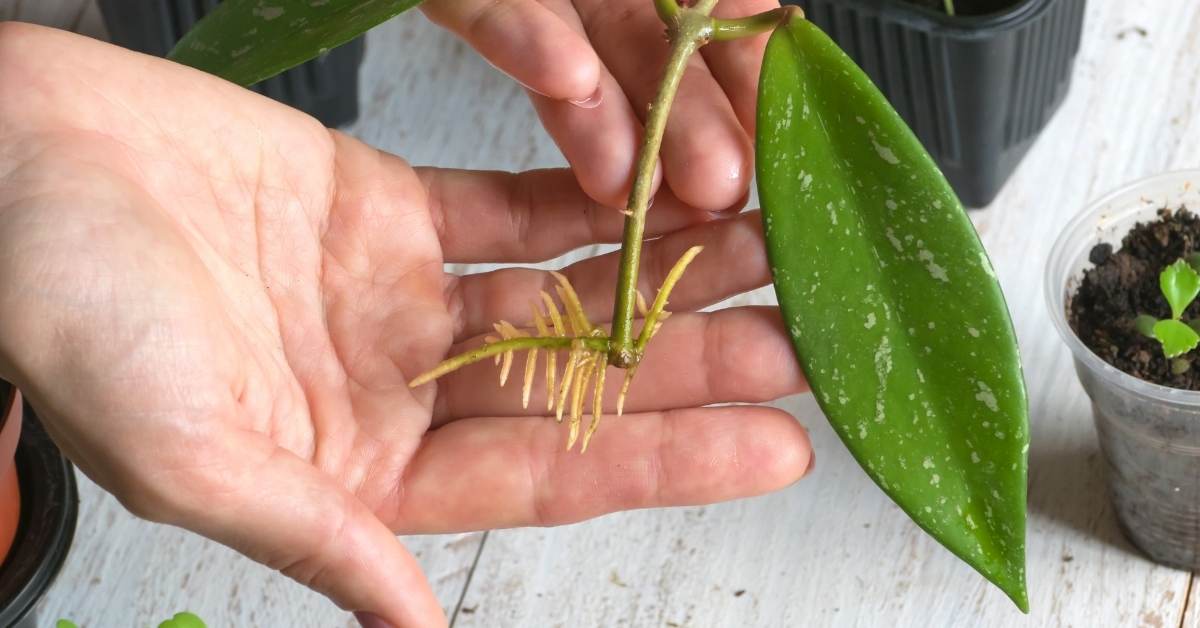Kumquats (Cumquat in Australian English) are cold tolerant, compact, aromatic, and with few pests; they are the perfect no-fuss citrus.
The flesh of the kumquat fruit (Citrus japonica) is sour, juicy, segmented, and seedy. The rind of the kumquat fruit is edible and contributes a significant amount of flavor to the fruit. Kumquats have been grown as fruiting container plants in China for nearly three thousand years, making that country the world’s foremost producer of kumquats.
In recent times, its fruit has been commonly utilized for preserving entire in spirits like brandy, as well as in honey or sugar, in addition to being consumed fresh. This trend began in more recent times.
Kumquats are wonderful plants to use as topics for tiny and container gardens due to their compact and dome-shaped crowns, tightly branching habits, small and neatly arranged leaves, modest root systems, and sweetly scented blooms.
Many years ago, when working in an octogenarian couple’s suburban Adelaide garden, I noticed a citrus tree in an old cement pot beside their front steps.

The owners couldn’t remember how long it had been there —”since the children were babies,” and it was somewhat neglected.
Nevertheless, it clung to life, apparently subsisting on random handfuls of blood and bone… and tea leaves!
It was a Kumquat, and when given a little extra TLC, it fruited gloriously that winter. I was so impressed that a kumquat became the first pot plant I bought for my own garden.
Nearly three decades later, that first tree remains in the same pot, in the
same place. Despite increasing shade below a maturing overstorey, it continues to fruit faithfully every winter.
If lemons are the delicate fussy eaters of the citrus family and oranges the steady, capable oldest sibling, the kumquat must surely be the easygoing youngest child of a large brood, making do with whatever they can scrounge. They are the most cold-tolerant of all, cheerfully handling temperatures down to -10°C, and, although they respond well to fertilizer like any other citrus, they are more forgiving of missed meals.
Plants are dense and compact, flowers are wonderfully scented, and the fruit hangs for months, stunning against the green foliage. With modest attention, most varieties bear reliably. I’ve had success with three different varieties. So, give kumquats a go if you’ve had no luck with other citrus varieties.
What is a kumquat?
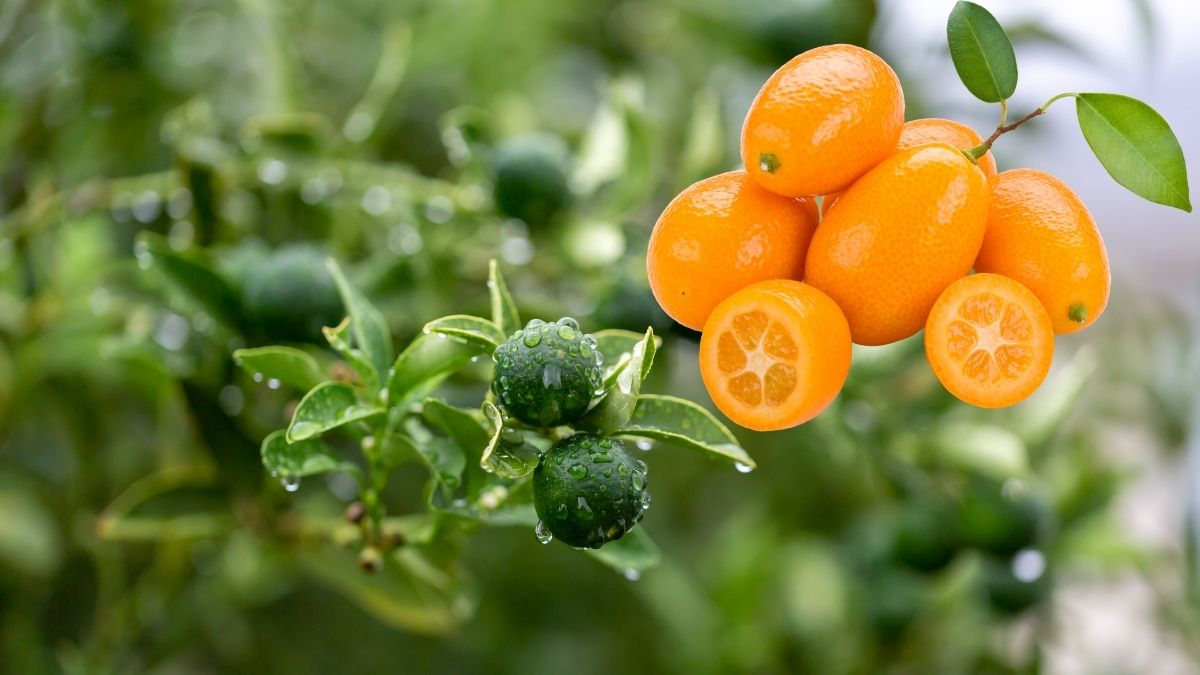
Kumquats are believed to be native to China, first mentioned in that country’s literature in 1178, but their taxonomy is confusing. Once included with other citrus varieties, they were split into their own genus of Fortunella in the early 1900s, only to be switched back more recently.
Various natural and cultivated hybrids, such as the calamondin or calamansi, complicate things further. Nevertheless, they all have features that distinguish them from another citrus. Their cold tolerance is linked to a unique protective dormancy that requires several weeks of warm weather to break. They are smaller and slower-growing than most other citrus, which makes them terrific in pots.
The kumquat rind is thin and sweet when ripe, though pulp is usually sour; I love that combination and enjoy the less astringent cultivars fresh, skin and all, whereas others prefer to bite the fruit and squeeze out the sour juice before eating.
The intense citrus flavor truly shines when combined with sugar – kumquat marmalade is exceptional, in my opinion, beating Seville preserves in flavor. And even if you don’t want to eat them, the fruit-bearing tips are lovely in floral arrangements and as table decorations.
What does a kumquat taste like?
Kumquats are somewhat similar to oranges in flavor, but they have their own unique twist: the skin is sweet, and the flesh is sour. Multiple kumquat cultivars are now commercially available. In addition to limes and kumquats, you may also eat sunquats and limequats (lime-kumquat hybrid). Like kumquats, both sunquats and limequats may be consumed without being cut up.
How to eat a kumquat?

Unpeeled, whole kumquats provide the most flavor. Despite popular belief, the juice is really rather sour, and the sweetness comes from the peel.
The sole exception is that certain people may need to avoid kumquats because of allergies to other citrus fruits’ peels.
You may remove the sour liquid from the fruit before eating it if you like. If you want to get the juice out of fruit, all you have to do is bite off a piece of it.
The sweet and sour tastes are best enjoyed together; however, many people recommend putting the whole fruit into your mouth and biting it.
Gently rolling the apple between your fingers before eating it may also improve the flavor. By doing so, you may combine the contrasting tastes of the fruit’s sweet skin and sour meat.
Also, kumquats need a good deal of chewing. Chewing them longer brings out a sweeter taste.
You may soften the skin by immersing the fruit in boiling water for 20 seconds and then rinsing it in cold water before eating it. However, there is no need to do this.
The bitter seeds of a kumquat may be eaten, spat out, or removed by hand before or after the fruit is sliced.
Soil requirements
Like other citrus plants, Kumquats need a very acidic soil with a significant amount of organic matter. Check with the nursery near you to find out what the optimal fertilizer combination is for the citrus tree that you have.
Planting kumquats
It’s best to plant kumquat only in warm soil, preferably between late spring and early fall in cooler places and at any time of year in warmer climates. If you live in a temperate area, it is advisable to purchase potted plants in the winter since this is when nurseries stock up, and you can see the fruit.
Commercially purchased kumquats are grafted onto trifoliata rootstocks for better performance throughout Australia.
How to harvest kumquats?
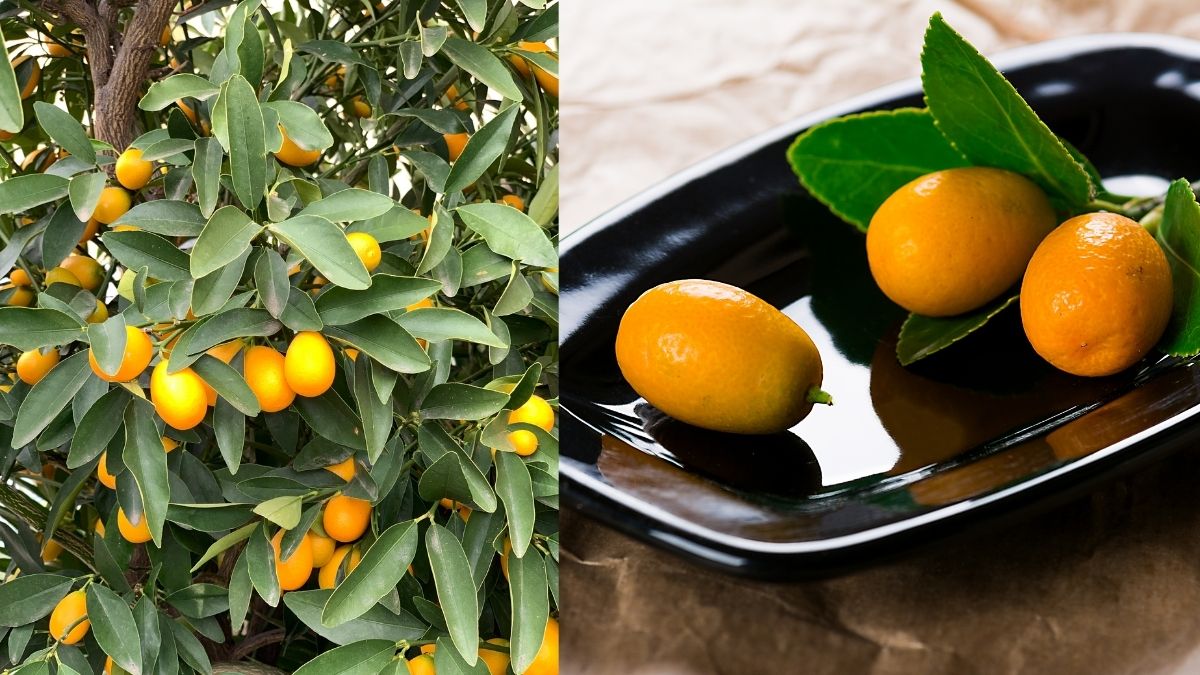
To maximize the shelf life, fruit is best snipped off rather than pulled.
Use within a few days or refrigerate in a paper bag for up to one week.
Although more cold tolerant than other citrus, kumquats still need as much sun as possible, plus perfect drainage –create a mound in low-lying areas and avoid excavating into clay substrates.
Prepare a planting area with a diameter of 60 inches (1.5 meters) at least one month in advance, if at all possible. Incorporate a wheelbarrow of composted organic matter or a large bag of potting mix, a bucket of pelletized chicken manure, as well as 2 kilograms of gypsum for clay soils and zeolite or bentonite for sandy soils.
Apply a seaweed extract that has been diluted with water, and then cover the area with a thick layer of mulch. This will allow the worms and other soil organisms to form a rich, crumbly substrate with good drainage.
By putting a stake across the hole, holding the stem, and then backfilling, you can ensure that the planting depth matches the soil level in the pot. This is important because burying the roots too deeply or exposing them causes the tree to develop more slowly.
Very young whips can be planted in narrow pots or bags in the same manner as bare-rooted trees when the weather is mild. This involves soaking the roots in seaweed extract that has been diluted with water, washing away the soil, and spreading the seeds over a cone-shaped mound at the bottom of the planting hole.
Backfill gradually while generating more levels of root systems as you go. Maintain a firm pressure without over-pressuring the soil. Put down some mulch, and make sure it stays moist.
How to Store Kumquats?
It’s pretty straightforward to store and keep kumquats fresh for a long time. Keep kumquats fresh by storing them in the fridge in a sealed plastic bag.
Do kumquats grow well in pots?
Yes. Kumquats are ideal for growing in containers due to their compact size, as they have very few if any, thorns and their relatively simple cultivation requirements.
How to grow kumquats in pots?
Choose big tubs made of terracotta, ceramic, or plastic that are glazed or sealed on all sides and have several drainage holes. The tubs should be the broadest at the top. The pot feet will maintain a clean hole.
Make sure to use a high-quality potting mix that allows water to drain away easily, and add some zeolite to the soil so that it can retain nutrients. Keep a broad lip around the plant to help it retain water. It is recommended that pots be rotated every few months if they are against a wall in order to promote balanced development.
Be careful not to over-pot your plants; instead, put young trees in containers of intermediate size, and then move them up to progressively bigger pots as their root balls expand. You may always place a smaller pot made of plastic inside the “ultimate” huge decorative one. The smaller pot should be elevated on its own pot feet.
Kumquat care and maintenance
Kumquats fruit looks their best when fed regularly with balanced pelletized chicken manure fertilizer formulated for fruit trees (or other organic fertilizer targeted at citrus). Fertilize in early spring, summer, and autumn, or monthly during the growing season. Water regularly throughout the dry season. Kumquats require little pruning. They don’t tend to throw vigorous water shoots (except in subtropics and tropics), and their natural growth habit is pleasing; a light trim is generally all that’s needed to tidy awkward or crossing branches.
How to prune a kumquat tree
From November through April, kumquat plants consistently bear fruit. Reduce the tree’s size after the fruit has been picked but before fresh blossoms grow. Kumquat trees are modest, topping out at about 10 feet in height, making them ideal for use in smaller spaces such as yards or even containers. The trees’ innate resilience means they seldom need pruning. However, it may still be done to alter the tree’s form and eliminate diseased or broken branches.
Remove any diseased, broken, or otherwise unhealthy branches by cutting them off at the branch collar using a small saw or hand pruners. A three-cut approach is recommended for cutting down huge branches. Begin your initial cut around 12 inches away from the main stem, from below the branch.
Raise the blade of the saw until it binds. Then, three inches closer to the trunk, cut down from the top. The two slits will create a neat break in the branch. The third slash should be made, so the stub is removed neatly and flush with the branch collar.
Get rid of any infected branches by cutting them down to healthy wood. It’s essential only to use sound wood for the cut. Discolored wood in the cut is a sign of decay and should be removed. Prevent the spread of illness by disinfecting your pruning equipment with rubbing alcohol between each cut.
Cut back any limbs that are touching another or a building.
Remove any shoots that have developed on the main stem. Remove them by snapping them off by hand or with pruning shears if they’ve grown more prominent. Trim away any crowded, tiny branches that are near the main stem.
Root suckers should be cut off. To remove a sucker, dig around until you reach the root and sever it there.
Kumquats pests and diseases
Anyone who’s struggled with recalcitrant lemon trees will appreciate the kumquat’s excellent pest and disease resistance. Scale, and the sooty mold caused by scale, as well as cottony cushion scale, can be controlled with pest oil, or scrub them off with a toothbrush and soapy water and wipe off the sooty mold.
That’s about it for kumquat pests! Sparse, yellowing leaves are more often caused by straightforward hunger than specific nutrient deficiencies seen in many other citruses. But, if fish emulsion liquid fertilizers don’t green up your tree, try iron chelates and then Epsom salts.
Do you eat the skin of a kumquat?
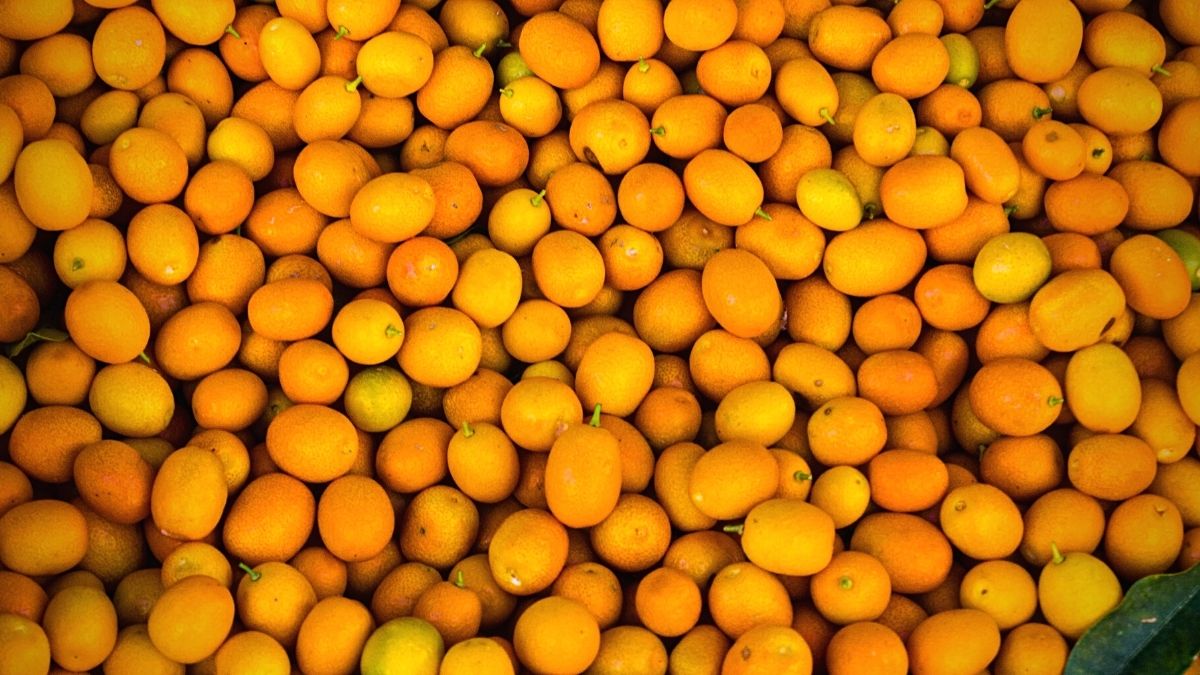
Yes. Kumquats have skin that is edible and has a pleasant flavor. On the inside can be a few of seeds. It is not very juicy, and there are moments when it is so sour that it causes your eyes to water. There are several distinct varieties of kumquats.
Are kumquats poisonous?
Even though they are not toxic, the seeds have a flavor that is comparable to that of orange seeds. If you are in the mood for something more delicate, you may cut the kumquat in half and remove the seeds. Instead of swallowing the seeds, you may just spit them out as you eat, or if you don’t mind the taste, you can even chew them up.
Is kumquat good for diabetes?
Kumquats are a winter fruit that is suitable for people with diabetes to consume since they are low in sugar and rich in fiber content. If you have diabetes or are at risk for developing diabetes, you should probably concentrate on increasing the number of fruits and vegetables you consume on a regular basis.
Is it good to grow kumquats indoors?
Kumquats can only be successfully grown in full or partial sunlight. The more light they receive, the better, but just like any other citrus, they can be grown inside on a window that faces east or west and still flower and produces fruit. The more light they receive, the better. The flowering stage of kumquats occurs much later than that of other citrus fruits.
Does kumquat make your room smell nice?
Yes. A very little citrus fruit kumquat has a sweet taste, a sour core, a lemony-piney fragrance, and a hint of bitterness. You can also buy comercially produced Kumquat Fragrance Oil, which will deodorize your room with a fresh lime scent.
